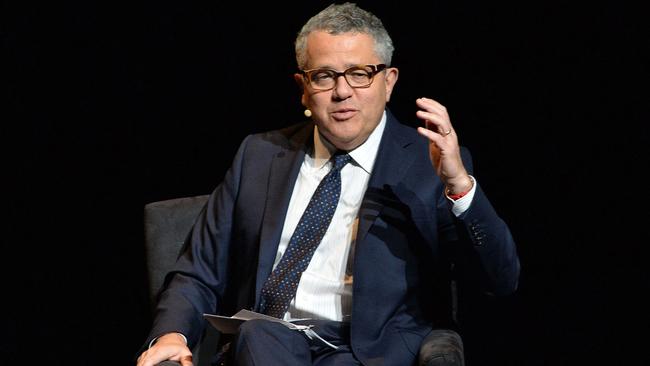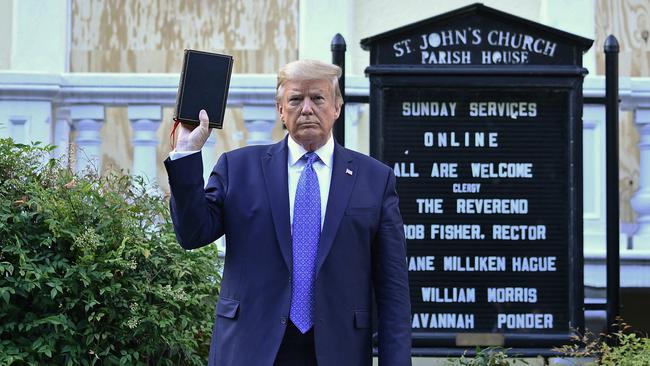
These days proliferating lapses in journalists’ judgment and standards are not simply forgiven by the editorial establishment. They are rewarded. As long as they are the right kind of error by the right kind of person.
Even if Jeffrey Toobin is in fact the indispensable legal mind CNN evidently believes he is, his reinstatement last week must surely fill some of his colleagues with misgivings. “Who’s Zoomin’ Who?” the great Aretha Franklin once asked. It’s a valid question that may take new form in the minds of participants in future video calls with the easily distracted Mr Toobin.
But his restoration to a more salubrious on-camera role is a helpful reminder of the rules that now govern news. The medium is no longer the message: The new reality is that the mission is the message. As long as your work furthers the mission, no failure in behaviour, no error in reporting or editing, no corruption of the truth or the evidence will go unrewarded.
All data and facts, all judgment about stories and the people who produce them, are subordinate to the mission. In one of the more ironic developments of this age of progressive hegemony, this is called “moral clarity”.
As CNN was being restored to its full complement of progressive missionaries, the same message in service of the same mission was more powerfully conveyed by the authorities who every year emerge from the temples of Columbia University to bestow on another crop of journalists the mantle of Joseph Pulitzer.
The steady conversion of these “prestigious” awards into Hero of the Soviet Union-like ribbons for full-time advocacy of approved causes was nearly complete this year, with almost all the prizes in journalism and literature going to works that fit within the approved range of writing, which now seems to run all the way from economic and racial inequity through the legacy of white supremacy to racist policing methods.

Last year the Pulitzer judges decreed that facts, as witnessed by documentary historical evidence, were subordinate to the mission when they honoured The New York Times’s “1619 Project”. This year they expanded the definition of journalism by awarding a special citation to a citizen bystander who captured the death of George Floyd on her smartphone. Next year, who knows? If you can scribble some quick thoughts about white privilege on the back of a paper napkin, be sure to send it off to the Pulitzer Board, Columbia University, New York, N.Y.
Happily, just as the judges were finalising their deliberations, we got a more objective assessment of the state of much journalism with another official evisceration of a story that was aggressively peddled by all these prize-winning news organisations.
The inspector general of the Interior Department issued his report on the actions of the US Park Police last June in clearing protesters from Lafayette Square, across the street from the White House.
Journalists feverishly reported that the park had been cleared by police with tear gas to make way for US president Donald Trump’s bizarre photo opportunity with the upside-down Bible in front of St John’s Church. “Protesters Dispersed with Tear Gas So Trump Could Pose at Church” was a typical headline, from The New York Times.
But after exhaustive investigation, the inspector general reported that this was false: Park Police officials “had made those decisions and had begun implementing the operational plan several hours before they knew of a potential presidential visit to the park, which occurred later that day.”
The Lafayette Square fable was one in a long list of stories we were forced to consume during an election year. You could draw up a list of alternative booby prizes for false stories: about the Russian government paying bounties for the murder of US soldiers in Afghanistan; debunking as preposterous the idea that Covid-19 might have started in a Chinese lab; denying there were anything other than peaceful protests in American cities last northern summer.
Even as journalists produce more of these politically tendentious falsehoods, they insist that Mr Trump is spreading a “big lie” about a stolen election. As it happens, they’re right about that. The tragedy is that they don’t understand the main reason he is able to propagate his own fictions is because no one outside their own circle believes theirs.
The Wall Street Journal





If it’s true that to err is human and to forgive divine, then the people who control our media must be the gods they believe themselves to be.